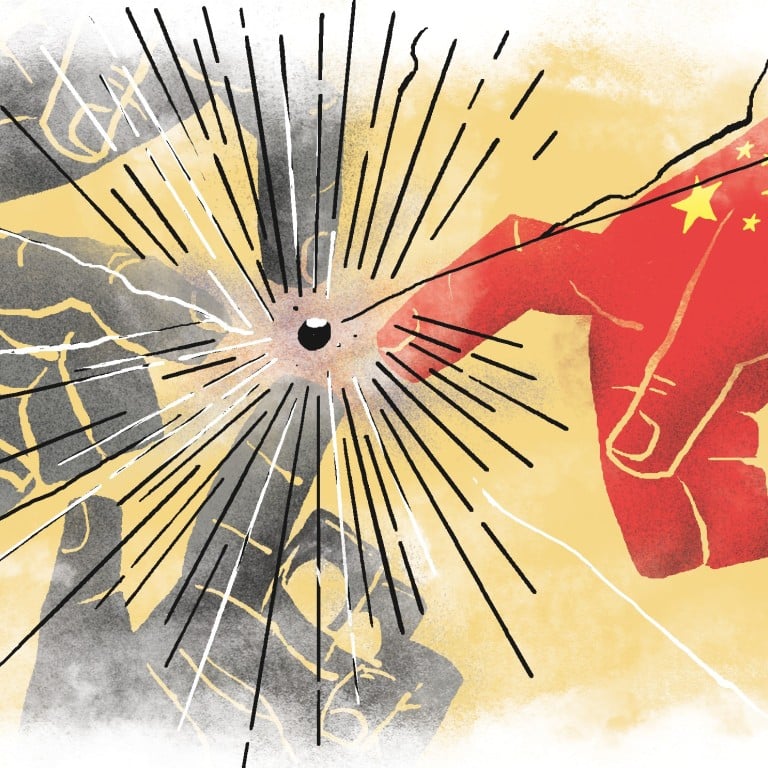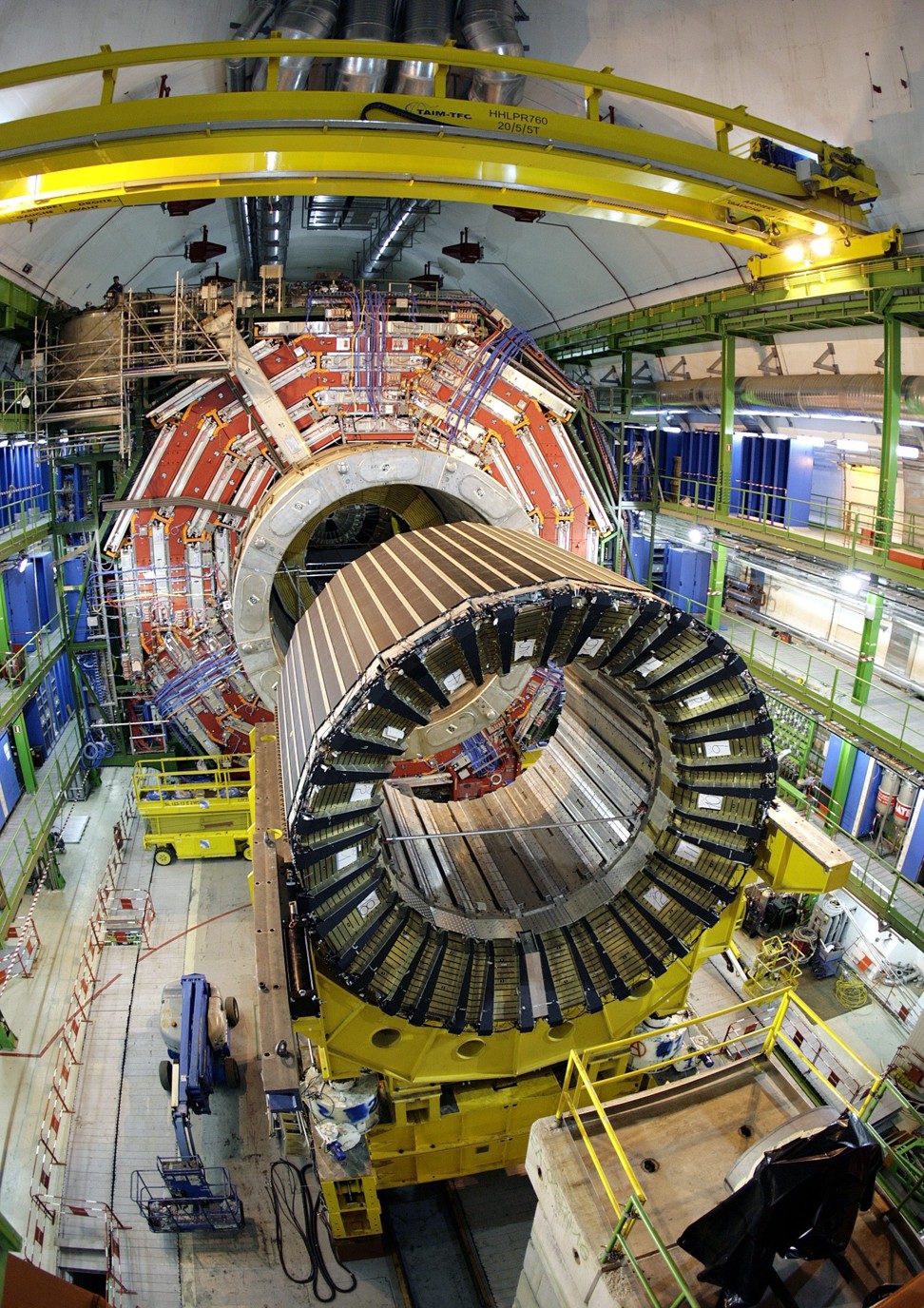
Exclusive | Building a Higgs boson factory: China’s race to the frontier of physics
- One team in Beijing is leading the charge to create the next generation of giant particle colliders to unlock the mysteries of the fundamental forces of the universe
- But the quest is costly and complicated, and other teams are competing with the same ambition
When a series of collisions beneath the French-Swiss border seven years ago confirmed the existence of an elementary particle, it set off a chain reaction in the world of Chinese physicist Wang Yifang.
The subatomic crashes in the Large Hadron Collider – a massive, multibillion-dollar machine operated by the European Organisation for Nuclear Research (CERN) – had verified the existence of the elusive Higgs boson.
The confirmation of the “God particle” resolved a number of fundamental scientific debates stretching back generations and capped decades of work by thousands of researchers.
But for Wang, director of the Institute of High Energy Physics in Beijing, the moment was just the start of a new beginning.
“In the last 300 years, science has advanced so much because people studied molecules. Then they studied atoms. Then they studied the nucleus and then particles, leptons, and quarks … It’s hard to imagine it’s going to stop here,” he said.
For Wang, the next step was to come up with the next generation of particle collider, a factory that could generate Higgs boson particles en masse.
And he wanted China to build it.
In the beginning
The US$13 billion Large Hadron Collider (LHC) near Geneva is the biggest machine in the world. It measures 27km in circumference and took a coalition of more than 100 countries 30 years to realise. It can fire protons at near light speed, smashing them together to help scientists understand the mechanics of the universe.
James Beacham, a Duke University physicist involved in the experiments that confirmed the Higgs particle, said the LHC was like a “hammer”.
“If you have no idea that the Higgs boson exists, the first thing you do is to take a gigantic hammer and you smack all along the wall as hard as you can until a Higgs boson pops out,” Beacham said.
But proton collisions were “too messy”, the particles appeared too briefly for them to be thoroughly investigated, and not enough Higgs bosons were generated to be able to study them with statistical accuracy.
Beacham said the next step was to build another collider – one that was like a pair of tweezers that could generate particles at a finer precision for researchers to study.
“What the world needs now is more Higgs bosons,” he said.

Wang’s interest in fundamental physics dates back to his early days as a scientist when particle physics did not exist as a research field in China. After graduating from Nanjing University with a degree in nuclear physics in 1984, Wang went on to get his doctorate in high-energy physics at the University of Florence and did postgraduate work at MIT and Stanford University.
In 1992, he was invited to work at CERN with American scientist Samuel Ting, a co-winner of the Nobel Prize for physics in 1976 for the discovery of the J particle.
Wang returned to China in 2001, keen to apply what he had learned at home.
At the institute in Beijing, Wang and his team started working on their plan for a Higgs boson factory as soon as the news of the particle’s observation came through in 2012.
Their goal now is to realise the Circular Electron Positron Collider, a circular system with a 100km circumference to be built underground. A proposal was submitted to the central government in November and with luck, construction could be ready to start by 2022.
The next step
While Wang’s team was the first in the world to unveil a detailed concept design for an LHC successor, there are three other competing proposals – one in Japan and two from CERN.
The one is Japan is called the International Linear Collider but Tokyo has reportedly not indicated whether it will back the proposal.
The Japan Times quoted Masanori Masuoka, secretary general of Japan’s Advanced Accelerator Association Promoting Science and Technology, as saying Japan needed to have a collider before China. “If we don’t, we will lose our status,” Masuoka said.
At the same time, scientists in Europe are working on plans for the Compact Linear Collider and the Future Circular Collider, designs that will be reviewed by the European Strategy for Particle Physics in the next two years.
Japan plans search for Higgs boson, end of world allowing
The trouble is that each one would need vast sums of money to build and legions of scientists to run. The LHC alone is operated by roughly 10,000 researchers from about 100 countries.
Beacham said the proposals might not necessarily be in direct competition, especially as they are still in the planning stage.
“If you ask me personally, as a physicist, I say ‘build everything’. I want multiple experiments to corroborate each other’s findings, I want individual analyses, I want to make sure we’re all … preparing things on the same basis,” he said.
But even he admitted that the resources constraints meant that at the end of the day maybe just one or two machines could be built.
Unlike bidding to host a World Cup or Olympic Games, there is no governing body to vote and decide who should build the collider. Instead, whichever proposal secures funding first is generally expected to be the one to go ahead.
Beacham said building a collider at CERN looked like a natural choice. “You don’t have to build a completely new infrastructure,” he said.
There’s just one problem – CERN would need the approval of all of the European Union member states to get the funding, a hard ask as the bloc grapples with internal divisions and economic weakness.
How Stephen Hawking’s Chinese disciple is smashing universal barriers in his spirit
Wang said the world shouldn’t see this as a race. He agreed with Beacham that the best scenario was to have all four projects proceed. But he does hope China could be one, if not the, home of the collider.
“It would be great,” Wang said. “Our next generation of particle physicists would be doing world-leading science at home.”
There is still a lot of work to be done. Wang said it would take the Chinese scientists “a few years” to complete the design report. Next they need to come up with detailed budget estimates on the costs and choose a site. The institute then needs to work with the local government on a detailed civil engineering plan. Only then could they go to Beijing and ask for central government support.
“To make it happen you need everything to go right. If you miss any step, the whole thing will go bad,” he said.
Wang said China would collaborate with scientists from other countries to do it. “We don’t think we are going to do everything by ourselves, it doesn’t make sense. Wherever the collider will be housed, it would have to be an international effort,” he said.
American misfire
There is one example of where going it alone proved a failure. About 20 years ago, the United States tried to build its own version of the LHC. The Superconducting Super Collider in Texas, which promised to deliver collisions over three times more powerful than the one eventually built by CERN, received US$2 billion in funding before Washington pulled the plug.
Today, a network of half-finished tunnels beneath the city of Waxahachie lays abandoned, testament to the risks of such a big project. Historian Michael Riordan, who studied the failed venture, said that a project of such scale took more than science to pull off.
Riordan said that one of the reasons the project did not get the support it needed was because many international physicists balked at the idea of living in a “Bible Belt state”.
“You’re not just constructing buildings and a machine. You are building a community where good physicists are going to want to come there and do good work,” he said.
“Culture is important.”
Gao Jie, one of Wang’s colleagues at the institute, said the team was mindful of the “devastating” American failure but nonetheless hoped the Chinese collider could become a training ground for the country’s future scientists.
“Right now, the centre for particle physics is in Europe. But that’s right now. We are discussing the future, the next steps. We are talking about what could happen in 10 years,” Gao said.
The timing has never been better for Wang and Gao. Even though the Chinese economy is growing at the slowest pace in decades, Beijing sees science and technology as the keys to overhauling the economy and moving up the industrial value chain.
China’s funding for science and research to reach 2.5 per cent of GDP in 2019
Last month, the central government set the spending budget for science and technology to 2.5 per cent of its GDP, second only to the United States. But most of China’s research and development funding has gone to applied science, with many scientists complaining that the authorities have neglected fundamental research with no immediate use.
Tong Jinnan, a professor at China University of Geosciences, said the funding for basic research was seriously inadequate.
“To be frank, [pouring too much money into applied research] just puts the emphasis on quick results. It’s not possible to make breakthroughs if we do not put enough resources into basic research,” he said.
“The US is very concerned about China’s technological development, but it doesn’t mean that China is really a strong tech power.”


